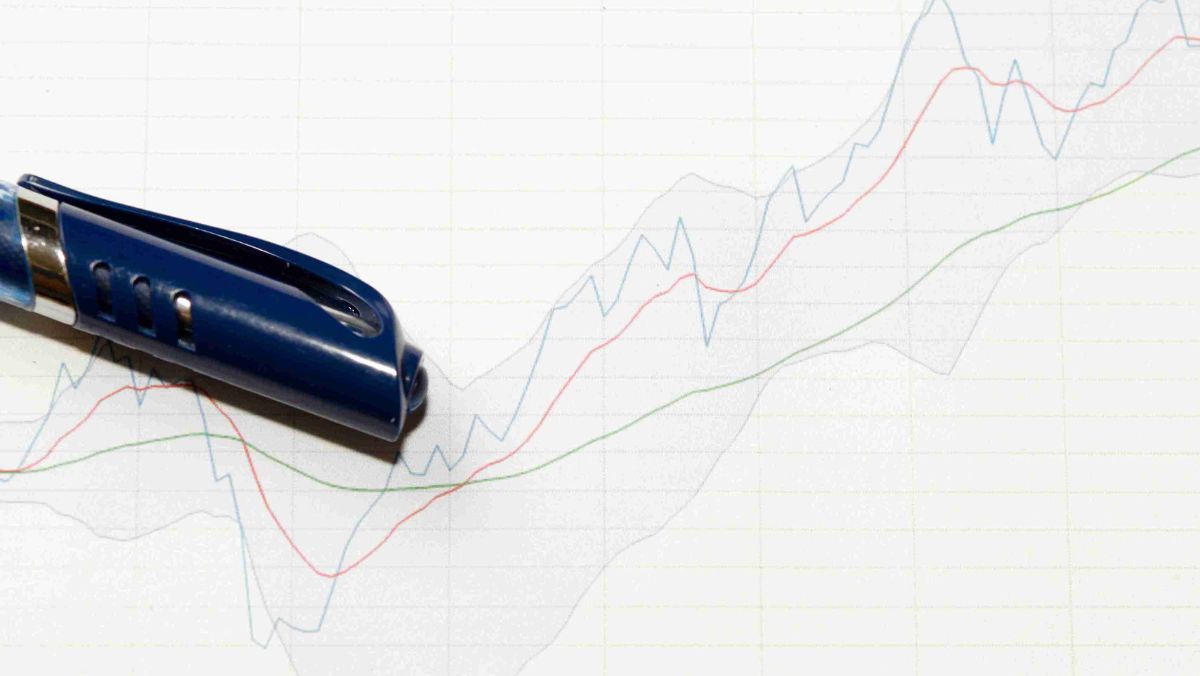Friday Feb 2 2024 07:24

10 min

Trading can be stressful, with prices fluctuating rapidly and emotions running high. Having a sound risk management strategy is crucial to long-term success. One helpful tool is the Bollinger Bands indicator, which can help traders determine where to place stop losses and take profit levels.
In this article, we’ll explain Bollinger Bands, how they’re calculated, and how traders can use them to make smarter decisions about managing trades.
Developed in the 1980s by analyst John Bollinger, Bollinger Bands are a type of statistical band or envelope surrounding a price chart.
Bollinger Bands provides a graphical representation of support and resistance levels adjusted based on volatility.
The upper band of this tool acts as resistance in an uptrend, while the lower band acts as support in a downtrend.
The formula for the standard middle band is simply a moving average, often set to 20 periods:
Middle Band = 20-period moving average (close)
The upper and lower bands are calculated from the standard deviation, which measures how dispersed the price data is from the average.
Upper Band = Middle Band + (2 standard deviations of 20-period close)
Lower Band = Middle Band - (2 standard deviations of 20-period close)
The key inputs are the 20-period moving average, the number of standard deviations (typically 2), and the 20-period standard deviation. The bands will expand and contract based on the standard deviation value.
Some traders increase the standard deviation multiplier to 2.1 or 2.2 to make the bands looser and more sensitive. Decreasing the number of periods for the moving average and standard deviation will also increase sensitivity.

Bollinger Bands have applications for analyzing price action, identifying support/resistance levels, spotting reversals, and gauging momentum. But, one of their most popular uses is designing risk management strategies.
Specifically, traders use Bollinger Bands to set stop losses below support and take profit levels near resistance:
Stop Losses – The lower band can act as dynamic support, especially in an uptrend. Traders often place stop losses below the lower band to limit downside risk. If the price closes below the lower band, it signals a breakdown.
Take Profits – The upper band can act as dynamic resistance in a downtrend. Traders will aim to take profits as the price approaches the upper band. Closing above the upper band signals a potential reversal.
The main benefit of using Bollinger Bands to stop losses and profit-taking is that they adapt to volatility. In choppy conditions, the bands widen and give trades more breathing room. In calm conditions, the bands narrow and lock in profits quicker.
Here are some common techniques for using Bollinger Bands to set risk parameters:
Always use other indicators like candlestick patterns to confirm band breaks. Don’t base trades solely on Bollinger Bands.
The Bollinger Band Squeeze is a popular trading strategy based on periods of low volatility. When volatility drops, the Bollinger Bands contract sharply as the standard deviation declines. This “squeeze” signals a sharp price movement is likely around the corner.
There are two ways traders play the squeeze:
Breakout – Wait for the price to break out above the upper band or below the lower band. Based on direction, enter long or short after the breakout. Place a stop loss on the other side of the bands.
Fade – Fade the breakout initially to play reversion back to the median line. If the breakout continues, flip trade to follow the dominant trend.
Always check indicators like volume and momentum oscillators to confirm the validity of squeeze signals. Avoid trading the squeeze in choppy, low-volume conditions where false breaks are common.
You might also like to read: Schaff Trend Cycle Indicator Explained

Bollinger Bands can also be applied to various technical indicators for additional trading signals and to define overbought/oversold levels. Some examples include:
Expanding Bollinger Bands beyond price action opens up more possibilities for money management. For example, you can use bands on an oscillator to set earlier exits on overbought/oversold readings.
Consider giving this a look: Vortex Indicator - What Is It And How It Works
Here are some of the benefits of using Bollinger Bands for risk management:
While not a perfect system, Bollinger Bands provides valuable inputs for determining stop loss placement, taking profit levels, and timing trade entries/exits.
Bollinger Bands are useful indicators but do have some drawbacks to consider:
Traders should combine bands with momentum oscillators and volume analysis to confirm band breaks.
Use longer timeframes, like daily or weekly charts, to reduce false signals. Adjust standard deviation levels to fit market conditions.
Bollinger Bands is a versatile technical analysis tool that can aid traders in designing robust risk management strategies.
Setting stop losses below the lower band and taking profits near the upper band allows trades to benefit from dynamic support and resistance levels.
Traders should continue studying how to properly implement bands in their trading style and combine them with other indicators to confirm signals.
As with any tool, practice makes perfect, so aspiring traders should paper trade different band techniques before risking real capital.
Learn and trade with markets.com: The ultimate trading community!
“When considering “CFDs” for trading and price predictions, remember that trading CFDs involves a significant risk and could result in capital loss. Past performance is not indicative of any future results. This information is provided for informative purposes only and should not be considered investment advice.”